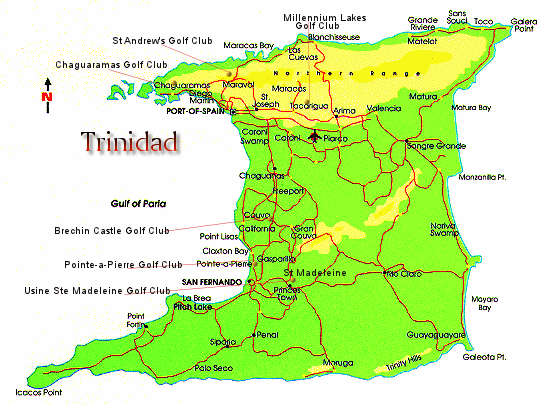A Brief History of Trinidad and Tobago

Trinidad became one of the major sugar colonies in the British West
Indies until the abolition of slavery in 1836. Indentured labour was
substituted, with the arrival of East Indian workers in 1845. But British
West India, struggling to compete with larger, more productive colonies
such as Cuba, became unprofitable by the 1890's. By this time, the island
was found to have considerable oil resources, and the first well was
established in south Trinidad in 1869.
Administratively,
Trinidad, like all other colonies, was overseen by specially appointed
governors who presided over a local legislature. In 1898, Trinidad was
unified with Tobago to form a single colony. The establishment of labour
unions in the 1930's, the creation of universal suffrage in the 1940's
and the formation of the People's National Movement (PNM) in 1956, preceded
the granting of Independence from Great Britain on August 31, 1962.
Dr. Eric Williams served as the country's first Prime Minister, and
lead the P.N.M. ( People's National Movement )party to three consecutive
general elections victories. The last of these was in 1976, the same
year that Trinidad and Tobago became a Republic on August 1. Ellis Clarke
became the first President, superceding Sir Solomon Hochoy - the last
Governor-General.. During this period, Trinidad and Tobago was in the
midst of an economic boom generated by high world oil prices. Williams
died on March 28, 1981 and was succeeded by George Chambers, who led
the PNM to its biggest ever margin victory in the general elections
later on that year. But the Chambers government struggled amidst the
collapse of the "oil boom" and the tide turned when the PNM
was swept out of office in the 1986 elections by the National Alliance
for Reconstruction, led by A.N.R. Robinson. Unfortunately, Robinson
was faced with the task of having to put measures in place to offset
the effects of the flagging economy. He was severely criticised for
going to the IMF to gain a loan, as well as for the imposition of Value
Added Tax (VAT).
The PNM,
now led by Patrick Manning, swept back into power in the 1991 elections.
Manning's period in office saw the tremendous growth of the business
sector and the initial attempts at attracting foreign investment. However,
continuing economic problems affected the popularity of Manning's PNM,
and his government was edged out of power by the United National Congress
(UNC) with its leader, Basdeo Panday, being installed as Trinidad and
Tobago's fifth Prime Minister. Panday's government continued the policy
of attracting foreign investment, with positive effects finally becoming
apparent in mid-1997.
However,
allegations of corruption eventually dogged Panday's administration,
with the chief focus falling on the construction of the new terminal
at the Piarco International Airport. There was also criticism of attempts
to muzzle the media. Nevertheless, the UNC managed another narrow victory
during the 2000 general elections, winning 19 electoral seats to the
PNM's 17 with the NAR, just nine years after serving as the ruling party,
reduced to a solitary seat. Allegations of voter-padding and further
questions surrounding corruption forced Panday to call a snap-election
just one year into his second term. This time the UNC and the PNM became
split at 18 seats each. The responsibility of choosing a Prime Minister
to form a new government fell to President Arthur N.R. Robinson, who
decided to go with Patrick Manning - a controversial choice that has
resulted in the UNC refusing to take up its position in Parliament:
the party instead calling for a return to the polls in order to settle
the issue. The issue was still unresolved up to March 2002.
Go
back up